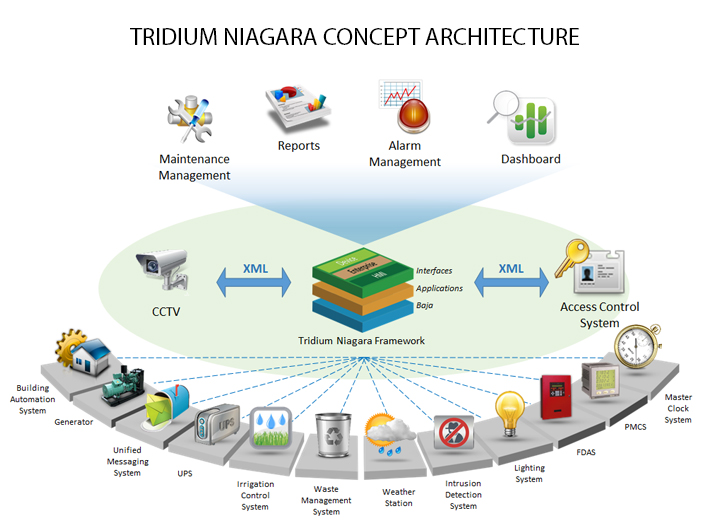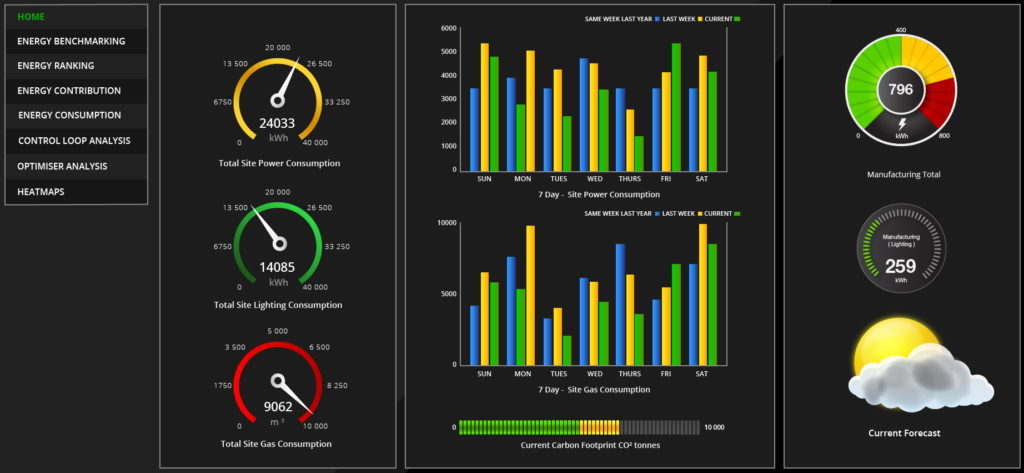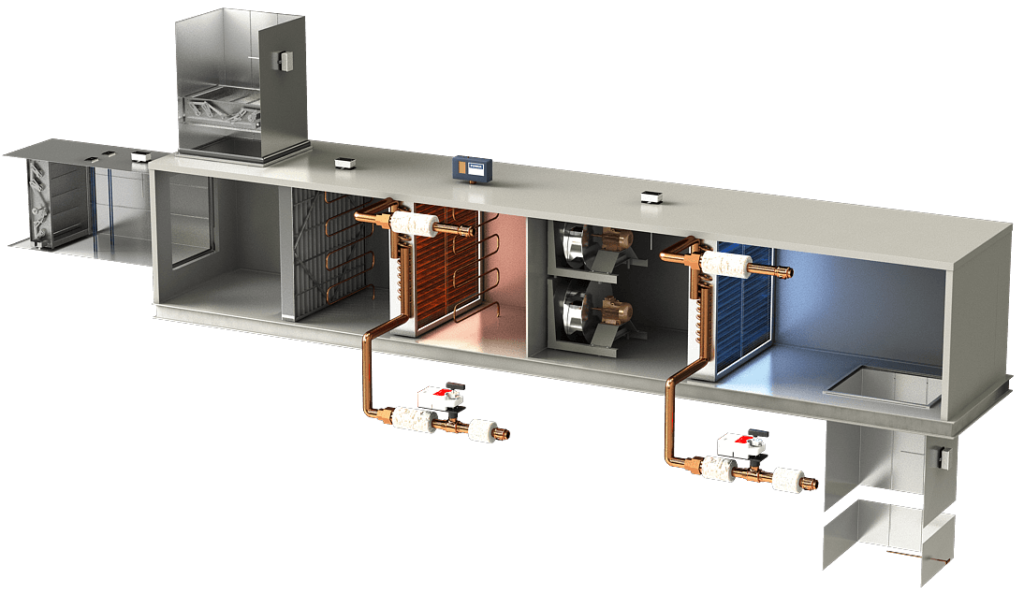- HVAC, Lighting & Access Control
- Retro Commissioning
- Energy Usage Analysis
- Energy Management Strategies
- System Integration Specialists (Lonworks • BACnet • MODbus •
SNMP • System 600 Apogee • SQL • Sedona • OBIX •
Proprietary (Legacy Protocols))
Quality, Integrity, Trust
- Tridium Product Sales
- Tridium Product Installation, design, configuration and reporting
- Sedona Sales
- Sedona Installation, design, and configuration
- Comprehensive BMS Maintenance Solutions
- Energy Management
- Building Audits/Condition Reporting
- Design-Build Services
- Commissioning/Start-up Services
- Tridium Niagara AX and R2 Certified
- Siemens Certified (Apogee, etc.)
- Siemens Products Importer/Sales
- Energy Management Systems
- Full Site Installations
- Building Management Systems Commissioning
- Remote Monitoring and Control from Anywhere
- Maintenance
- Service
- Integration between the different system on multiple protocols
- Multiple Driver integrations directly to unit controllers
- Tridium
- SEDONA
- Distech
- Trend
- Adroit
- Design
- Consultation
- Installation
- Controls (On any equipment)
System Integration

Buildings today are equipped with a diverse range of electronics to control heating, ventilating and air conditioning (HVAC), energy management, lighting, security and other systems. Effective integration and interoperability between these systems is critical. Integration can improve building performance by reducing costs, fuel consumption and carbon emissions. It also helps to achieve the security and comfort levels demanded in modern and dynamic business environments. The challenge is communication between these diverse systems, because they often use different protocols to connect with each other and the building management system. But if they can be integrated then the systems offer invaluable information and intelligence. The solution to this challenge? Tridium’sNiagaraAX Framework® .
Energy Metering

Meters can bring many benefits to today’s energyLconscious building manager. Simple intelligent metering alone can provide details on halfLhourly energy use. This can show how demand varies throughout the day, highlighting peaks and troughs in usage. Even the best setLup and commissioned building will move from its initial performance over time. This is where information from meters becomes invaluable because it indicates how the building actually performs and will pinpoint when energy efficiency falls away. The best approach to understand metering data is to ensure that meters and subLmeters are connected to a wider building management system (BMS). This could be a challenge due to different manufacturer protocols. However with Niagara, interoperability is no longer an issue and meters can be readily linked to the BMS. The NiagaraAX Framework communicates with a wide range of protocols and equipment and allow users to monitor data and manage alarms through any standard Web browser.
Graphical User Interfaces
 The ingenuity of the graphical user interfaces designed and implemented allows users to interact with their environment through various electronic devices intuitively. Graphical user interfacing provides a scalable solution to fit your team’s needs. The interface may be via a computer workstation, laptop, tablet, phones and all via the internet or local network. Each individual user will only access their individual screen, which can be custom-designed by the user and accessible via password protection. Systems are designed to expand to meet your changing needs, with system graphics that be integrated to incorporate other system platforms and other programs.
The ingenuity of the graphical user interfaces designed and implemented allows users to interact with their environment through various electronic devices intuitively. Graphical user interfacing provides a scalable solution to fit your team’s needs. The interface may be via a computer workstation, laptop, tablet, phones and all via the internet or local network. Each individual user will only access their individual screen, which can be custom-designed by the user and accessible via password protection. Systems are designed to expand to meet your changing needs, with system graphics that be integrated to incorporate other system platforms and other programs.
Controls

- Traditional building management systems typically have stand-alone applications with separate monitoring and control stations for HVAC Controls, energy metering and power management, central plant equipment and lighting. While each application is beneficial on
its own, the real power lies in managing them as one, intelligent solution. - At CCS, we have adopted a single point of control by integrating new and existing building systems through affordable, CUSTOMIZED CONTROL SOLUTIONS and realize many benefits, including:
- Enterprise-wide view and automated building control processes
- Information sharing between environments
- Increased uptime and operational efficiency
- Improved response time to events
- Reduced installation and life cycle costs
- With the Niagara platform as an open architecture, supports leading open industry standards including BACnet®, Niagara™, OPC®, LonWorks®, Sedona, N2, and Modbus™.
- The most common primary function of the BMS is the control of a buildings Heating, Ventilation and Air Conditioning Systems (HVAC) including;
- Air Handling Units – Chilled Water Plant – Cooling Towers – Tenant Condenser Water – Heating Water Plant – Exhaust Systems – Zone Controls – Computer Room AC.
- Other controls functions:
- Lighting Controls
- Irrigation
- Grey Water Systems
- Generator Stop/Starts
- All these features brought together creates a fully functioning BUILDING AUTOMATED SYSTEM.
- Other controls functions:
Monitoring and Reporting

Combining all of the above mentioned functions, enables a Building Manager/Owner to monitor each environment in his building to make real-time decisions to increase uptime and decrease maintenance and costs. Reporting on any integrated and monitored equipment can be done, automated and customized to the user’s requirements.
All of this can be done locally or remotely!

